Travel, Vacations, Activities and Information for Yakushima
- Location: 135 km south of Kagoshima City, Kyushu
- Total area: 503 km
- Population: 14,000
- Rainfall: 2,000 mm on the coast; 6,000 mm in the mountains
- Ancient cedar forests of cryptomeria japonica
- Main town Miyanoura
- Yakushima is part of the Osumi Islands
- Part of Kagoshima Prefecture
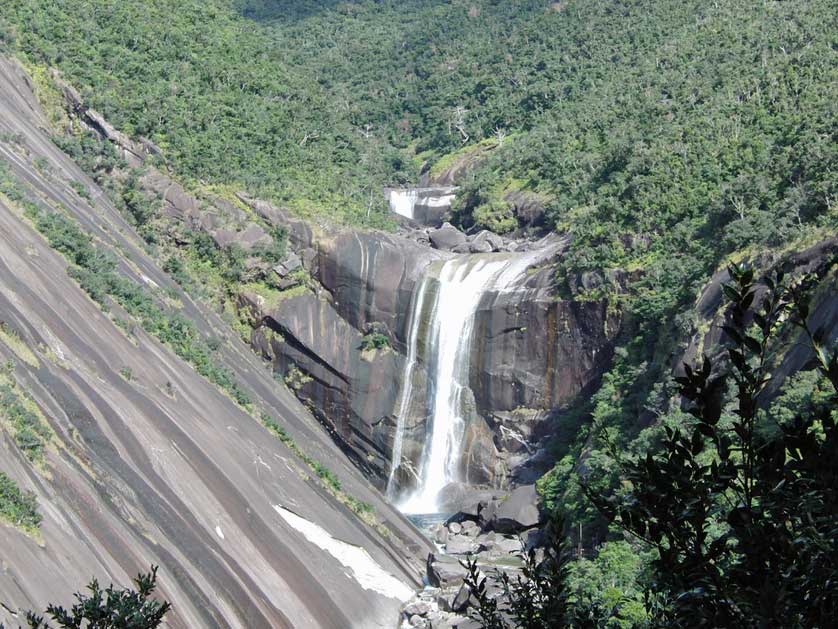
With a backdrop of lush green mountains, sparkling blue water, and rare flowers and animals, Yakushima is an incredible place to spend a few days.
Yakushima has activities for all types of vacationers; you could spend your days lying on the beaches, soaking in the hot springs, and driving to the various viewpoints. Or, if you’re an avid and active nature lover, there are also several activities to cater to your interests.
There are hikes for all levels, from short paths that take you through the cedar forest and over suspension bridges, to two-day treks to the top of Mt. Miyanoura (1936 meters), Kagoshima’s highest peak.
In the summer months, you can rent canoes and paddle down the great river that runs through the island. Yakushima also contains several flower parks and even a few waterfalls, one of which is ranked one of the Top 100 Waterfalls in Japan. No matter your inclination, there are many ways to enjoy yourself on this splendid nature island.
The Yakusugi Museum (Yaku-sugi shizenkan) close to Anbo on the east coast is a good place to start for an introduction to the cedar forests on Yakushima. The interior of the museum is made from cedar wood including the floor and the museum has interesting displays on cedars and a good collection of photos.
A few minutes walk from Miyanoura ferry terminal is a modern building that holds a Tourist Information Center and the interesting Yakushima Environmental Culture Village Center with displays on the history, culture and nature of the island.
The Yakushima Town History and Folk Museum is located close to the Miyanoura River in the area where most of the city offices are located. The single story exhibition hall displays a variety of exhibits explaining the local history and culture of Yakushima.
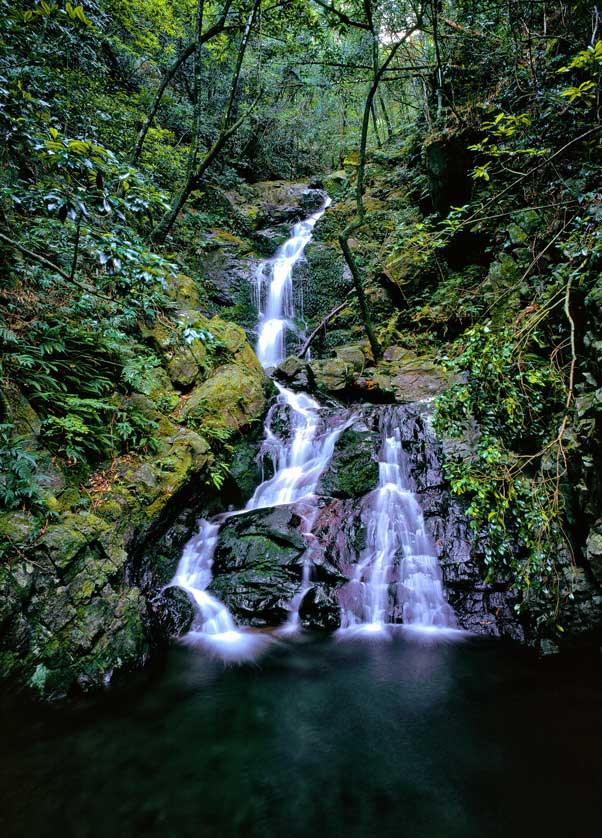
Yakushima’s Topography
Over 75% of the island is made up of mountains, with more than 40 peaks reaching higher than 1000 meters. There are varying climates; in the winter the island is covered in snow-capped mountaintops and during the summer one can enjoy the subtropical coastline.
Highlights: UNESCO World Heritage Site
In December of 1993, Yakushima was the first site in Japan to be recognized as a UNESCO World Heritage Site. Today, 21% of the island is considered to be World Heritage territory and 96% of that area is made up of natural forest. There are several difficult hiking routes through the World Heritage territory. In order to gain World Heritage recognition, a site has to contain remarkable value in terms of aesthetic, ecological, and scientific perspectives.
Yakushima itself contains several endemic and endangered species of plants and animals. The island’s Yaku-sugi trees are huge, natural cedars that are unique to the island. There are several paths with varying lengths and difficulty level, some as short as 30 minutes for non-hikers that just want to get a glimpse of the forest. All trails will take you through the forest on Yakushima to get a view of these trees.
On your way, you will undoubtedly spot several of the island’s Yakusaru (endemic monkeys) and hopefully a few Yakushika (endemic deer).
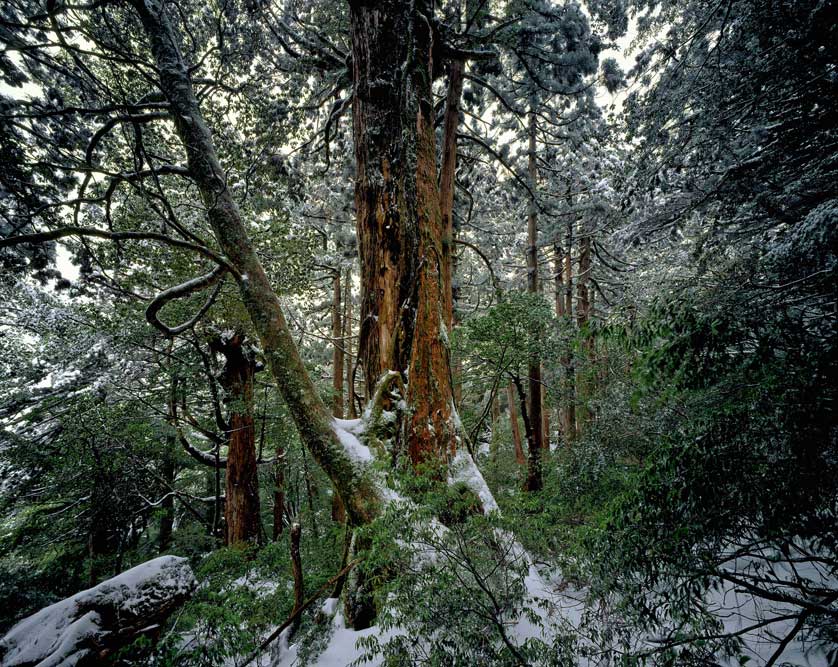
Jomon-sugi Cedar
The island’s most famous cedar, while being named the poetically memorable ‘thousand-year-cedar’, is actually estimated to be 5,000 years old. Although it is difficult to get to, involving a long hike, this mammoth tree 25.3 meters high with a trunk 16.4 meters in circumference, makes the effort worthwhile.
Waterfalls
Senpiro-no-Taki (66 meters) and Ohko-no-Taki (88 meters)
Ohko-no-Taki is ranked as one of the Top 100 Waterfalls in Japan. In order to view Senpiro-no-Taki, you must stand at a viewing point across from the waterfall, as it flows down three large mountain points, but it is a spectacular view. However, you may walk right up to Ohko-no-Taki and grab a wet seat on the rocks below it.
Natural Ocean Onsen
In the sea, amidst dark, rocky formations, pools of natural hot springs have formed. Some of the springs are only large enough to soak your feet, while others may hold a few people at a time. At any time of day, this is a beautiful spot to visit; you can stand among the waves crashing over the rocks, with your feet soaked in warm water, admiring the wonderful view.
However, the best time to take a dip is around five o’clock, when the tides are low and you can enjoy the springs without fear of the cold ocean waves breaking over you. However, you should be aware – foreigners may be surprised to come for a quick dip and find many of the island men sprawled out like seals on the rocks, enjoying this relaxing spot in the nude.
Yaku-sugi Land
Yaku-sugi Land is a forest reserve where visitors can experience a variety of hiking courses to see the ancient cedars ranging from 30 minutes to 2 and a half hours in duration. The shorter trails are along a wooden boardwalk while the longer trails go deeper into the forest.
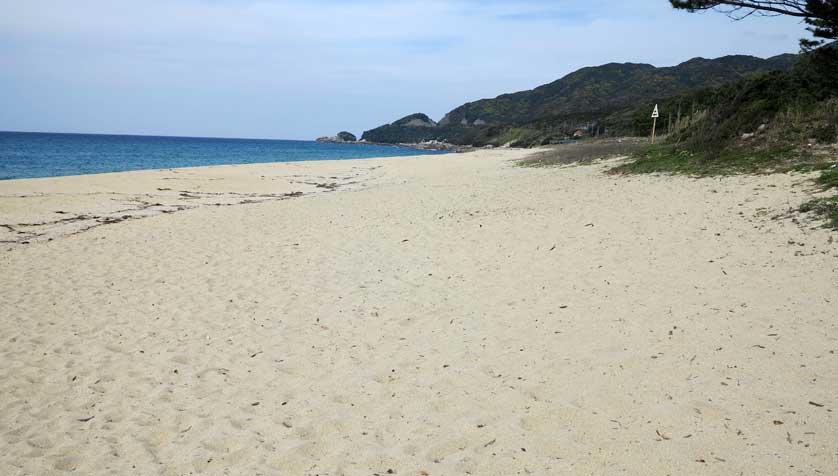
Yakushima Beaches and Turtles
Yakushima Island is lined with many beautiful beaches that you can relax on for a lazy day in the sun. From mid-May to mid-August you may be able to catch the island’s turtles laying eggs on the shore. There is a turtle information center on the island that houses a small museum of sorts where you can see many of the large turtles’ shells and eggs.
Getting Around Yakushima
The best way to make your way around the island is to rent a car. There are a few car rental places within walking distance from the ferry ports at Miyanoura, Anbo, and the airport.
They will provide you with a map, in English, of the main sites of the island. It is fairly easy to make your way around without Japanese skills the main sites are off of one main loop road around the islands and attractions are pointed out with English signs.
Yukushima’s two main towns are Miyanoura and Anbo, which both have Tourist Information Centers as does the airport. Local buses leave the ferry terminal in Miyanourna west to Nagata (30 minutes) and east via Yakushima Airport and Anbo (40 minutes) and on to Onoaida, Kurio, and the Oko-no-taki waterfall.
A one-day bus pass for Yakushima is 2,000 yen; two days is 3,000 yen on buses run by Tanegashima-Yakushima Kotsu.
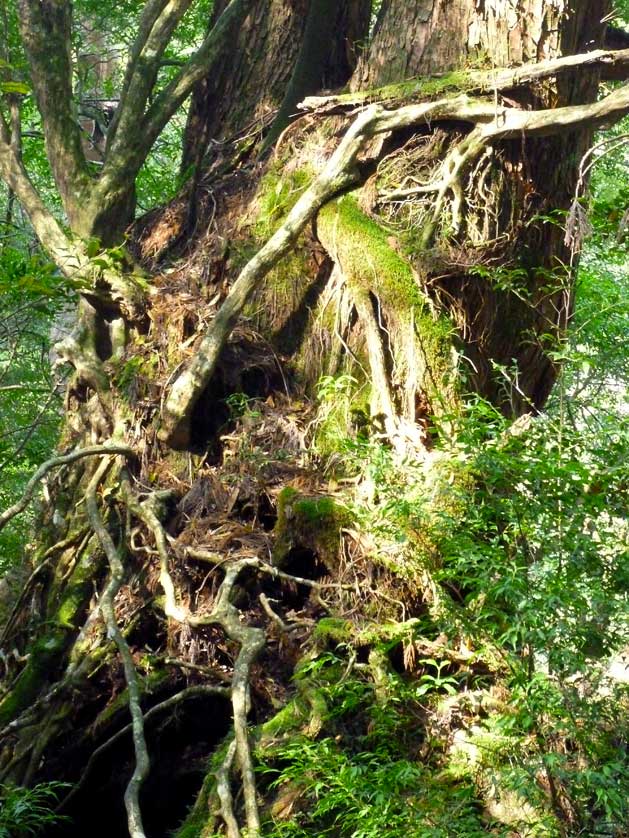
Access – How to Get To Yakushima
Toppy & Rocket Jetfoils
The Toppy and Rocket jetfoils are fast boats that connect Kagoshima City, Ibusuki, Tanegashima, and Yakushima (around 15,000 yen return from Kagoshima City). The Toppy and Rocket usually dock at Miyanoura though two boats a day dock at Anbo – journey time is around 2 hours 40 minutes. One ferry a day also connects Miyanoura with Shimama Port in the southwest of Tanegashima.
The Toppy & Rocket boats are operated by Tane-Yaku Jet Foil.
Car Ferry
There is a four-hour car ferry from Kagoshima city (standard adult fare: 9,500 yen return) to Yakushima’s Miyanoura Port. The car ferry is operated by Orita Kisen. The ferry from Kagoshima leaves Kagoshima New Port at 8.30 am arriving at 12.30 pm. The return boat leaves Miyanoura at 1.30 pm arriving in Kagoshima at 5.40 pm.
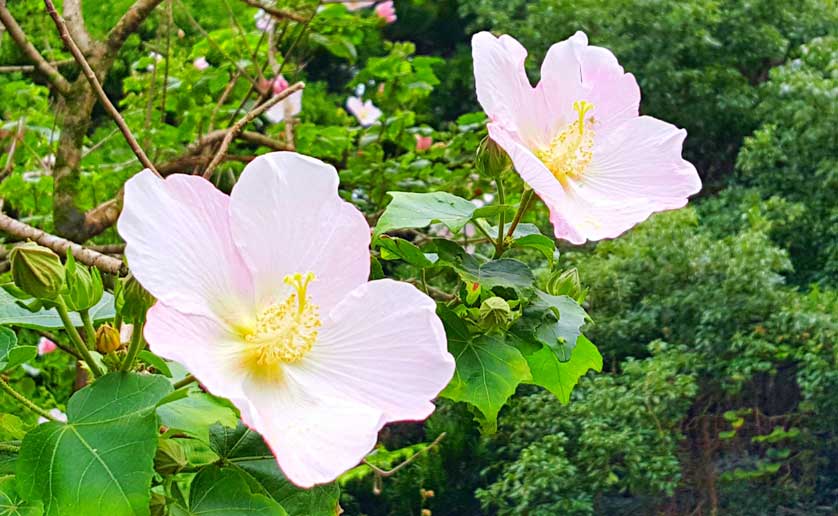
Air
Kagoshima Airport has flights to Yakushima Airport (around 35 minutes). Yakushima Airport is located on the east coast midway between Anbo and Miyanoura. Japan Air Commuter (JAC) – a subsidiary of JAL – flies a propeller service five times daily from Kagoshima (one-way from 14,100 yen) to Yakushima Airport.
There is also one daily JAC flight from Itami Airport in Osaka to Yakushima. The flight from Itami leaves at 10.25 am arriving in Yakushim at 11.55 am. The return flights from Yakushima to Itami depart at 11.40 am arriving in Osaka at 1.05 pm.
There is one JAC flight daily from Fukuoka Airport to Yakushima Airport. The service leaves Fukuoka at 12.30 am arriving in Yakushima at 1.40 pm. The flight from Yakushima departs for Fukuoka at 3.35 pm arriving at 4.45 pm.
Makurazaki Airport which previously had flights to Yakushima has closed.
Accommodation in Yakushima
There is a range of available accommodation on Yakushima from budget minshuku guest-houses to high-end western-style hotels and resorts. In Miyanoura try the Minshuku Iwakaya with rooms from around 6,000 yen for budget travelers. The Sankara Hotel & Spa is in the southwest of the island near Anbo offers luxury accommodation including Thai massage and French cuisine. The Yakushima Youth Hostel is also on the south coast.
In Onoaida the JR Hotel Yakushima has ocean views. Also in Onoaida is the plushest hotel on the island, the Yakushima Iwasaki Hotel (0997 47 3888) with its own hot springs and wonderful sea vistas.
Search all the accommodation options in Yakushima including budget minshuku and western-style hotels.
Map of Yakushima & Tanegashima
Stephanie Plewes
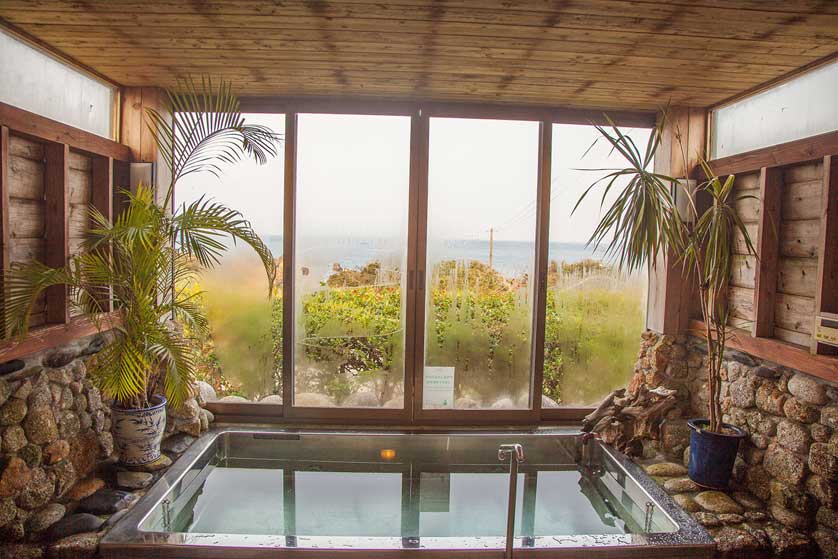
Book Hotel Accommodation in Japan
Hotels in Japan – Booking.com
Hotels in Tokyo – Booking.com
Hotels in Fukui – Booking.com
Hotels in Nagano – Booking.com
Hotels in Nikko – Booking.com
Hotels in Sendai – Booking.com
Hotels in Saitama – Booking.com
Budget Hotels in Tokyo – Booking.com